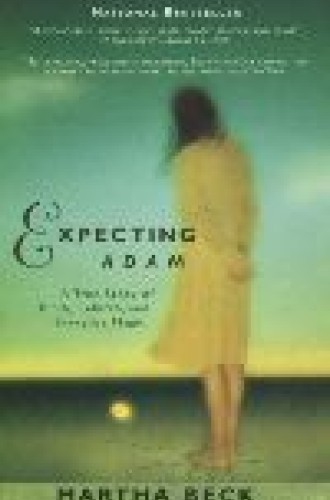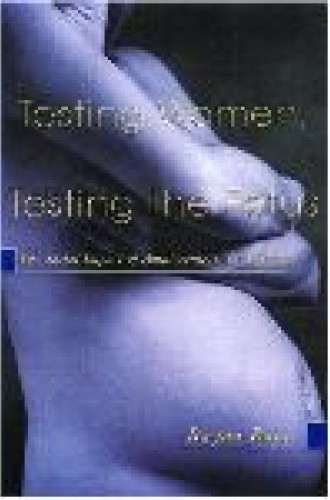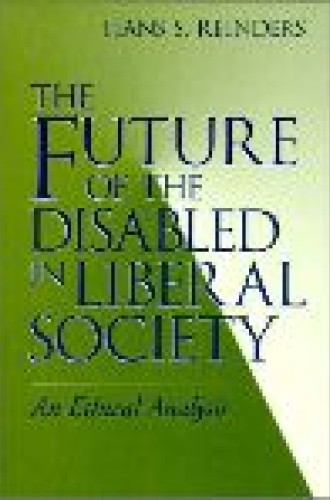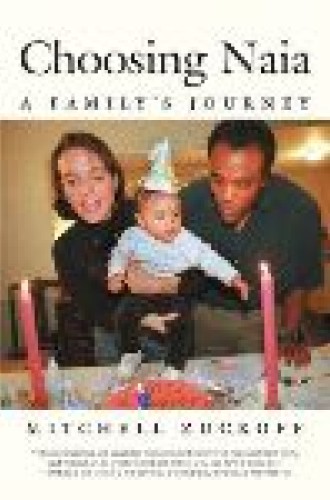Put to the test
We woke one morning last November to a spectacular display of bright white ice. While my first grader did a naked dance to celebrate the day off, we watched heavily encrusted tree limbs crash to the ground around Duke’s campus. The radio reported that others in Durham, away from the university’s private generators, were huddling under blankets, and we called friends and students to offer them our heated space. Soon our campus apartment was bustling with people. As I served up hot chocolate and flipped flapjacks, I was quite pleased with my role. Here, away from the brittle cold, a lovely chaos ensued, with happy children, full bellies, warm feet and a gracious host—me.
But what had been a cheerful bustle became, after 24 hours of proximity, a noisy swarm. The rainbow coalition of children playing on our floor grew both cranky—pulling hair during toy-turf battles—and dirty, as they took advantage of the mayhem to dodge baths. Ideological differences became less provocative than annoying as the adults wrangled over the class dynamics of Mary Poppins. And as time went by I attempted, through strained smiles and passive-aggressive hints, to keep my space mannered, orderly, hospitable. Over the course of our five days together I came to suspect again that true hospitality is messy and frustrating. To be truly hospitable is, to some extent, to lose control of one’s space and time—to be open to the disarray and interruption of embodied life. Perhaps hospitality is most nearly proleptic when it bears the unruly wounds of the risen Christ.
Most North Americans seem ill prepared for real interruption. Most of us prefer the unexpected to occur only on screen, at predictably scheduled intervals. Our neighborhood associations, pharmaceuticals, appliances and methodical committees help us to rule out the unpredictable and to encourage efficiency. But the overt dependence brought on by an ice storm or a vomiting child rudely awakens us to need. So awakened, we often find ourselves embarrassingly out of sync with others, who continue in their guarded routines and order. Christians may read this as a sign of our society’s diminishing capacity for incarnate hospitality.
Parents who care for children with disabilities are searingly aware of this decline in hospitality. Negotiating the systematic problem of underpaid and overworked teachers, as well as the inadvertantly unwelcome comments of grocery shoppers, parents of children with noticeable needs exist at the outer boundaries of inhospitable normalcy. The birth of a child who may never move out of a state of conspicuous dependence places its parents in the unseemly realm of the accidental.
Every child is truly an interuption, but the patient and expensive work of helping a child with disabilities requires a willingness to mark time differently. The challenges facing the parents are acute in a culture eager for efficient, calculable results. Perhaps, then, it should come as no surprise that nine out of every ten women who discover that their fetus has Down syndrome choose to abort.
Rayna Rapp’s book on “the social impact of amniocentesis in America” has won prizes in gender studies, ethnography and anthropology. A professor at the New School for Social Research, Rapp came to the project of mapping the “construction and routinization of this technology” after she herself went through prenatal testing, a diagnosis of Down syndrome and a selective abortion. Realizing that through these procedures women are becoming “moral pioneers,” Rapp set out to document and analyze the contours of the “brave new world” created by obstetric screening and technology. Her book is arguably the definitive work on prenatal testing in the U.S.
What Rapp discovers bears the weight of the decision that gave rise to her research: “This technology turns every user into a moral philosopher, as she concludes her fears and fantasies of the limits of mothering a fetus with a disability.” Her thesis is that individual women are courageously negotiating the new moral choices brought by technology, and she argues that the only overriding ethical consideration regarding that technology is that there be equal, economically feasible access to the available tests and procedures. Noting that white women typically talk about their decision differently than either African-American or Latina women, Rapp tackles head-on a question that would necessitate a reevaluation of her thesis.
In this section, titled “Are White Women Selfish?” Rapp analyzes and decodes the language of “selfishness” in the self-descriptions of Anglo women. One woman, who is characteristic of these interviewees, explains, “I just couldn’t do it, couldn’t be that kind of mother who accepts everything, loves her kid no matter what . . . Maybe it’s selfish, I don’t know. But I just didn’t want all those problems in my life.” Rather than considering the possibility that such narrations reflect genuine conflict over the question of selective abortion, Rapp suggests that these women are unwitting victims of both pro-life propaganda and an atavistic ambivalence about the entry of women into the workplace.
Not surprisingly, the most conflicted and complicated chapter in the book is the one in which Rapp attempts to read the cultural terrain of what she calls the “alienated kinship” of children with Down syndrome. Although Rapp states in her introduction that “the intersection of disability rights and reproductive rights [are] paradoxically linked feminist issues,” the potentially prophetic witness of the mothers who care for children with disabilities remains sequestered in this, the penultimate chapter.
Accentuating what one scholar has called a “kinship of affliction,” she draws variously on the shared difficulties of caring for these children, as well as on the notion that children with Down syndrome physically “resemble one another more than they resemble their families of origin,” to place a kind of boundary around the lives described. The testimonies of women (and it is almost always mothers) who care for children with disabilities remain separate, in a distinct category of “affliction,” rather than seeping into the broader analysis of the individual decisions to terminate pregnancies.
Rapp’s anthropological study is thus also, in a way, a telling autobiography, her testimony to the broadening gap between the one woman who chooses to give birth and the nine who do not. The book opens with a dedication, “To the memory of XYLO and the futures of Mira and Teo, all already and always children of a brave new world,” and it concludes with a chapter titled “Endings Are Really Beginnings.” She explains there that XYLO is the name she and her partner gave to the fetus diagnosed with Down syndrome. His ending, she implies, was the beginning of her research. “If the work accomplished in this book helps others to think about these evolving issues, his short life will have been a great gift,” she states. XYLO’s life and termination will be justified, Rapp concludes, if her interpretive lens helps other women negotiate the brave new world of reproductive choice.
Some mothers and fathers face the unimaginable pain of discovering that their baby will inevitably die soon after birth. Most seasoned pastors have prayed for and with a family facing this incomprehensible suffering and the decision of what to do next. But these tragic cases cannot preclude a conversation about the case of parents who are choosing to terminate pregnancies after diagnoses that are not terminal—diagnoses including Down syndrome, cleft palate, club foot, visual impairments and Klinefelter’s syndrome (which involves ambiguous gender).
People of faith are already interpreting such choices theologically, and their language begs for engagement. Carefully distinguishing the termination of a planned pregnancy from the abortions of “other” women, Christians are seeking theological justification for their decisions to terminate disabled fetuses. One woman explains that her pregnancy “interruption” was providential, another that God was testing her to see if she would be willing to return his angel to heaven. In a desperate attempt to bridge choice and faith, many who choose to “interrupt” their pregnancies (the common phrase in these cases) embrace the idea of the transmigration of souls, expecting that the terminated fetus will return in a subsequent pregnancy, wearing a new, improved body.
There are Web sites like “A Heartbreaking Choice” for women “who choose to interrupt their pregnancies after poor prenatal diagnosis.” As the hosts of the site explain, here is “a safe haven of encouragement and validation” regardless of the reason for the decision. Indeed, the decision itself becomes encrypted in language about “the babies who left us too soon.” One entry is characteristic: “Even though he’s gone and you’re no longer a mother to be / Just remember it was your love that helped to set him free.”
The conflict between the mothers who choose not to abort a Down syndrome child and these who do is salient at the Web site “The Ragged Edge,” where the mother of such a child expresses her disgust with “A Heartbreaking Choice”: “In other words, their fetuses had no value as imperfect living beings. Their only value is in celestial perfection. When they were potentially alive, they were worthless because of their disability. Now they are perfected, and mourned . . . [The mothers] have whitewashed these abortions with sentimental words and lovely pictures of angels and clouds. These pages are a paean to eugenics.” By calling the site “a paean to eugenics,” Mary Wilt sharply rejects the supposedly personal nature of the decision to abort. To choose against this form of life is implicitly to choose against the intrinsic value of each child with Down syndrome. When nine out of ten women choose not to bring a disabled child into the world it is both a sign and a reinforcement of the culture’s inhospitality toward those who live a conspicuously dependent life.
Hans Reinders carefully argues this point in The Future of the Disabled in a Liberal Society. The Willem van den Bergh Professor of Ethics and Mental Disability at the Vrije Universiteit in Amsterdam, Reinders was asked in 1996 to write on genetics and disability for the Dutch Association of Bioethics. His book is an extended moral reflection on the subject, and it directly counters Rapp’s argument that the overriding ethical concern attending prenatal testing is that of distributive justice. Indeed, Reinders suggests, the ever widening distribution of such technologies may in fact weaken the already tenuous commitment of liberal nations to funding disability services:
Assuming that disabled people will always be among us, that the proliferation of genetic testing will strengthen the perception that the prevention of disability is a matter of responsible reproductive behavior, and that society is therefore entitled to hold people personally responsible for having a disabled child, it is not unlikely that political support for the provision of their special needs will erode.The question of civic and social hospitality is key, but political liberalism is not ultimately capable of engendering and fostering hospitality toward people with overt, recalcitrant needs. The norms encircling the liberal axis of individual autonomy cannot easily accommodate lives dedicated to the care of perpetually dependent individuals, or admit the intrinsic value of these individuals.
Meticulously considering the policy implications of this tension, Reinders concludes that it is neither within the liberal purview nor within the limits of the practical to address it through legal restrictions on procreative technology and abortion. The predicament facing liberal society, then, is “cultural,” not “political.” “The benefits bestowed by love and friendship are consequential rather than conditional, which explains why human life that is constituted by these relationships is appropriately experienced as a gift. A society that accepts responsibility for dependent others such as the mentally disabled will do so because there are sufficient people who accept [this] account as true.”
The second half of Reinders’s book presents a philosophical and theological case for the complicated and gratuitous blessing of living in the midst of disability. He attempts to render the gratuity of complex dependency, to give voice to a practical, embodied knowledge and to persuade those who do not have such knowledge to consider heretofore unseen possibilities. Reinders’s Lutheran sensibilities emerge as he describes “the meaning of life as essentially a by-product, a freely received and gladly accepted gift.” He does not promise the reader that if she merely “tries harder” to accept dependent life she will find therein “personal fulfillment.” Rather, a feeling of fulfillment and meaning is a fragile gift.
The collective will for accommodating the disabled depends on the subtly public witness of those who care for them. This is a fragile thread on which to hang the future of wheelchair accessibility, special education and other public expenditures, but Reinders argues persuasively that it is the only plausible way. If he is right that “the democratic state will be able to sustain adequate support for the disabled and their families to the extent that its citizens are the kind of people who are prepared to share their lives with them,” Christians committed to hospitality are faced with a task of the imagination.
Toward this end, I recommend Expecting Adam and Choosing Naia. Though these two books are quite different in tone and style, both navigate the intricate frustrations and blessings of couples who chose to take the much less traveled route. The popularity of both (Expecting Adam is a bestseller) suggests that people may suspect something is awry with our present patterns of choice. Perhaps it also suggests that these stories are not only about receiving disabled life but about receiving life itself, in all its interdependence.
I read Martha Beck’s memoir “of birth, rebirth, and everyday magic” on a long flight to Los Angeles and could not control outbursts of both laughter and copious tears. Several people seated nearby asked me what in the world I was reading. Beck was a graduate student at Harvard when she discovered that her second pregnancy would result in a child with Down syndrome. She called on a retinue of “puppeteers” to pull and prod her into the reality of accepting Adam. These angels and archangels have their work cut out for them, given the obscene inhospitality that marks Ivy League graduate school. During one scene, Beck goes to the bookstore to look for sustenance for her journey:
Four or five long bookshelves were occupied by instructional variations on a single subject: how to turn a human infant into a genius in the shortest time possible. The object, apparently, was to have every child—no, I’m sorry, make that “your child”—contributing important innovations to science and letters before it achieved bowel control . . . I have seen many of these same books in other bookstores at other times, but only the Harvard Coop had all of them: Teach Your Baby to Read; Born to Win; Pre-Law for Preschoolers; Toddling Through Calculus . . .
And this was only the material manifestation of the embodiment-phobia apparent in character after character with whom she and her husband had to deal. In the midst of this, Beck came increasingly to realize that “I was not looking for information to transform my child into a prize every parent would envy. I needed to transform myself into a parent who could accept her child.”
This is not a theologically correct book. Beck sometimes depicts Adam as an otherworldly savior rather than a flesh-and-blood kid, and her syncretistic Mormon/New Age theology is eccentric, to say the least. But Beck vibrantly describes the joyful interruption and the graced recalibration of time that is receiving Adam. The supernatural and merely human gifts she receives along the way are sufficient for her task, and those who seek a theologically astute way to engender hospitality will do well to take careful (and, I suspect, joyful) note.
Choosing Naia originally appeared as a series in the Boston Globe, and its author, Mitchell Zuckoff, remains very close to the ground. In contrast to Beck’s stratospheric narration, Zuckoff reports the daily, prosaic work of Greg and Tierney Fairchild as they gather copious medical information, discern vocation and then live with the delicate reality of raising an interracial child with Down syndrome. With three weeks to decide whether to abort the pregnancy, the Fairchilds shift painfully back and forth, forth and back, reading about the challenges that their child will face and listening to loved ones who conclude that “this was a misbegotten pregnancy,” and that they should “try again.” Their awareness of the discrimination that will confront the child tips the balance one way, then the other. But finally they decide not to terminate, fully realizing in what Tierney describes as their “leap of faith” that they are about to become “pioneers.”
Whereas mischievous angels swirl through Beck’s narrative, Zuckoff relates the crucial impact of the Fairchilds’ extended family, friends and even church life on their capacity to choose giving birth to their daughter. A critical turning point comes when they discover that there is a woman who orchestrates the adoption of infants and children with Down syndrome. This discovery makes them realize that if they choose Naia, they will not inevitably be alone in caring for her. They have an “out” precisely because there are others willing to take on what might become for the Fairchilds an impossible task. This invisible cadre of caretakers extends the flesh and blood support given to them by Greg’s parents and Tierney’s mother.
Zuckoff’s story widens the focus to take in not only the couple who make the decision, the couple whose picture graces the book’s cover, but also those who help with grocery shopping, laundry, babysitting and dog walking. While the Fairchilds’ conversations with a genetic counselor provide them with many details regarding the life they may choose to receive, the daily material help given them by their own parents and siblings renders this choice for very complicated parenthood logistically imaginable. So does the tangible support given by Connecticut’s Birth-to-Three system, a state-funded program that provides early intervention for children with disabilities.
After they have made their choice for Naia, Greg hears the statistic that nine out of ten women choose to abort a fetus with Down syndrome and wonders what impact this will have on Naia’s future: “There’s safety in numbers,” he says. “When there are other children in the school system who are different, when Naia isn’t the only one, it makes it easier in terms of advocacy.” The picture on the cover of Rayna Rapp’s book, the image of a lone womb, epitomizes the crux of this problem. It suggests Rapp’s concept of the individual pregnant woman as a “moral pioneer.” But the hospitality called for in the brave new world of reproductive technology requires a critical mass of resistance, a resilient band of pioneers in Tierney’s sense of the term.
In a society bent on efficiency, those who wish truly to support disability rights may be called to lobby for and work within the woefully underfunded and under-researched area of special education. We may put ourselves on a list to adopt children with disabilities in order to provide a backup for someone who is struggling with the decision. Churches tempted to aim for yuppie-friendly perfection in their church pageants and Sunday school instead may need to reconfigure the expectations of the parents they seek to attract. It is surely unfaithful to ask the lone woman on the cover of Rapp’s book to make her choice differently without such changes.
Of course, this hospitality will be neither easy nor seamless, obviously beautiful nor efficient. It may turn churches on edge, teetering between Christian community and chaos, but such a life is more truly incarnate than the strength and independence our society seeks. After all, those who live with disability mark conspicuously what is true for all daughters and sons of Eve. We cannot exist without the gratuitous care of others and the prodigal love of God. Living into this truth, we may testify faithfully to a world that is currently, overwhelmingly, rejecting Adam.








